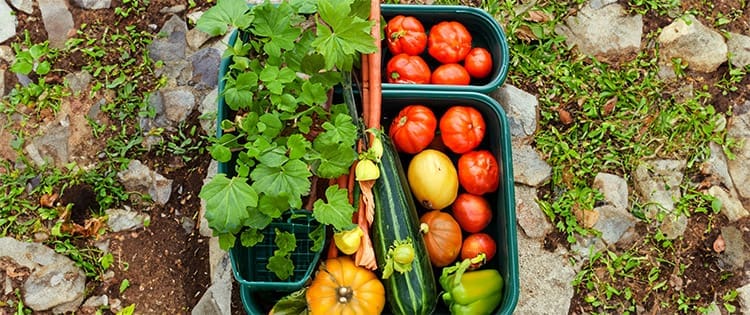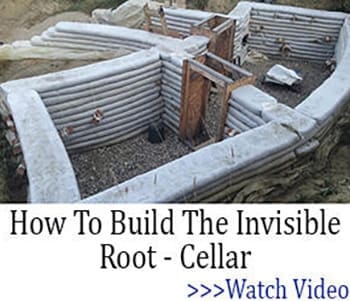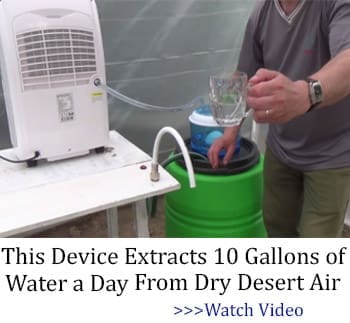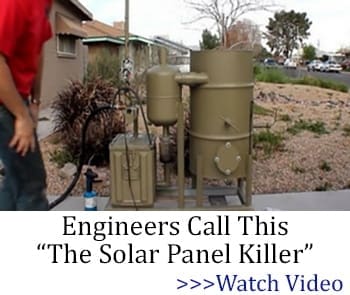It’s fall, y’all, and we’re looking at all of these changing leaves with a mixture of love and dread in our hearts. Sure, our gardens will be fallow and the fields will be dark for a few months in a very short time… or will they? While I recommend keeping your plants close (and your enemies closer!) during this time of the year, it’s still very easy to start and keep growing new delicious plants every week until the first frost sets in. And maybe even after that; but that’s a different article.
Today, we’ll be discussing what you can grow and harvest in simple container gardening setups during the autumn months from zones 4 to 9, for all any zone after zone 7 really isn’t getting much in the way of fall anymore. Those familiar with no-till gardening most likely know a large part of what we will discuss. Let’s get started.
Greens, Greens, Everywhere
Perhaps this is a bit of a cheat, but most people know that this is a prime time to start growing greens. This is especially true of greens that are likely to bolt or get bitter when exposed to extremely high-temperature spikes. Some kale and many mustard greens can be accused of these problems, and personally, they are ones I would prefer to avoid.
Related: Water Ban: How To Keep Your Garden Growing
Never grown greens before? They’re simple enough. A window box will let you grow a small, personal salad that will save you a few pennies in anywhere from 20 to 40 days. While that isn’t the shortest time ever, it’s a bit better than doing nothing with that period. After all, most gardeners hate to see an empty pot or plot of land. Let’s fix that.
What’s my personal pick for fall in zone 8b? Usually a few varieties of kale and maybe some red leaf lettuce. These plants tend to spring up quickly and do very well if they’re trimmed back to be “baby” versions of themselves for salads, too.
Root Vegetables
Garlic, onions, potatoes, and so many other long-term root vegetables love to be planted in the fall. That includes sticking them in containers or, if you’ve been basting a straw bale, getting your straw bale garden going. For the circumstances of the argument, I think a straw bale garden counts as a container. After all, the garden is “contained” in the bale and isn’t taking root through the bale (in most cases). It’s just an organic container and a bit larger than I usually see.
Related: How to Plant The Three Sisters Garden
How big does your container need to be to grow these root vegetables? That really depends on what you’re growing. I like to take a 5-gallon bucket and place 1 russet potato plant each in them. Make sure the buckets are well drilled for drainage and that the buckets are food grade and you should be good to go. Most buckets will hold up for the long time it takes to grow these potatoes and they’re pretty weather-proof. Better yet, they’re cheap. Go to any hardware store and it’s easy enough to go ahead and find dozens of them out there.
Almost all varieties of these root-production plants will end up lasting throughout the winter season and into the next year. Just make sure that the soil can’t hard freeze. Move them into your garage if you need to to avoid this.
A Dream of Next Year
Flower bulbs are frequently planted during this time of the year. Some of our favorites are irises. Though you won’t see which ones made it through the cold until spring or even early summer, it’s something nice to plant and look forward to. That includes in containers.
While not all bulbs will fit comfortably in small containers, there are many that will. I strongly suggest going to your local nursery and looking through their bulbs and then buying pots (or buckets, as mentioned above) to plant them in. A nursery will know best what your local conditions are like and what their bulb supply is best suited for.
If you can’t wait until next year, you can always try to do some small containers inside your house if temperatures are moderate enough and you don’t mind giving bare root plants some extra growing lights. You can condition bulbs to grow off-season by replicating the season indoors, but I do not generally recommend this unless you’re doing it for a special reason.
Don’t Bring Them In
Unless absolutely necessary (as in, blizzard conditions that are legendary), try not to move or bring in your fall container garden. If you absolutely must, bring them into the garage or another area that will remain cool enough to give your plants the cooling season that they desire.
What is a cooling season? Plants, like many animals, need winter to take some time off. It’s a lot of work growing and becoming something for humans to enjoy or, in some cases, eat. While it’s their main goal to always become something new, they heal and rest and fight off things like root rot during the dormant season. That’s winter.
Without winter, plants that are accustomed to having a dormant time will become exhausted and frequently die off much sooner than they normally would. While this only applies to perennials, there are a great many plants in container gardens in the fall that need a dormancy (or dormant) period during their lives because they do sprout back every year. Or, at least for a few years.
Related: DIY Elevated Raised Bed
Trees are a weird grey area in this section. Young fruiting and flowering trees are very sensitive to extreme cold and, if planted in a pot, can be given shelter but should not be given an exceptional amount of warmth unless you’re trying to force them to bloom out of season. This is strongly recommended because many trees use the dormant season to reinforce wood and shed poorly grown wood and branches during this time.
Remember that while bleak and dark, winter is a healing and resting period. Allow your garden to prepare for the cold with one last fun sprouting season, then settle in for long nights and recently harvested (and canned) veggies. Extra fall container gardening tips? Share them with us in the comments below and remember, Happy Gardening!
You may also like:
Strange Gardening Tips And Tricks That Really Work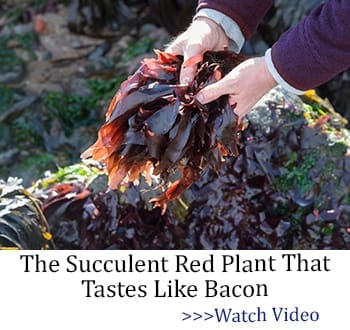
The Herbs You Need to Keep Close During Dark Times (Video)
What Happens If You Spread Coffee Grounds In Your Garden
A Medicinal Garden Kit For Starting A Small Backyard Pharmacy

